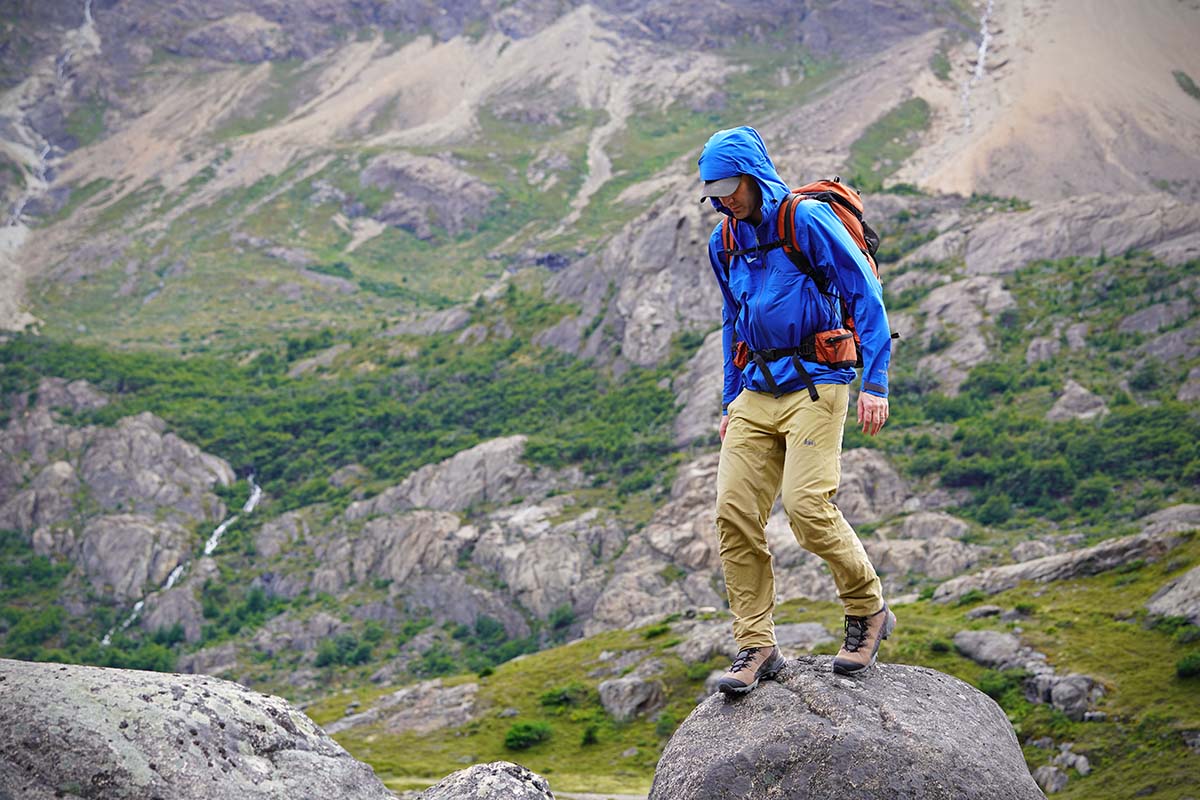
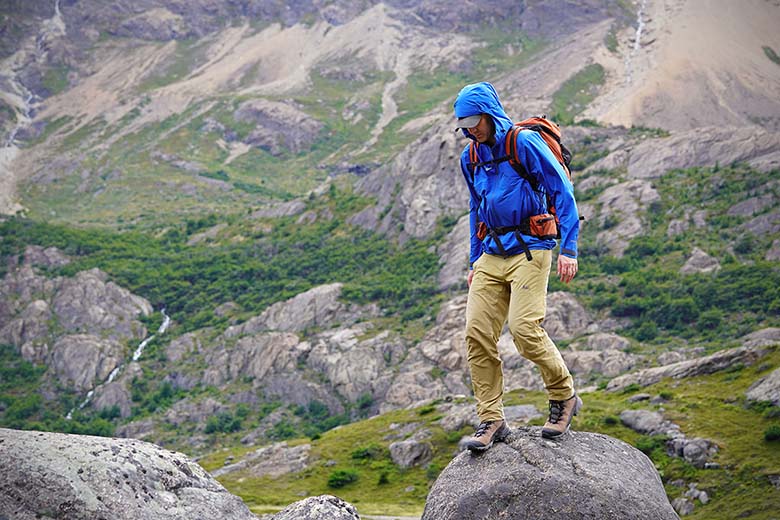
Switchback Travel


Switchback Travel
Price: $249
Weight: 10.5 oz. (men’s)
Waterproofing: 3L Gore-Tex Active
What we like: Fantastic value for a high-quality Gore-Tex hiking shell.
What we don’t: No pit zips and non-helmet-compatible hood impact versatility.
See the Men's REI Co-op Drypoint GTX
Backed by a Gore license, REI Co-op now has top-of-the-line waterproofing technology to replace their old eVent line. Combine this with REI’s increased focus on design and performance of their in-house products, and you have some very competitive offerings. The Drypoint GTX demonstrates just how far they have come. This lightweight, comfortable, and very functional hiking shell is among the best in its class, and at $249 is a solid value for what you get. Below we break down the Drypoint’s performance. To see how it stacks up to the competition, see our articles on the best hardshell jackets and rain jackets.
With a 3-layer construction, Gore-Tex Active for waterproofing, and fully taped seams, the REI Co-op Drypoint GTX is a hardshell by design (we have it in both our hardshell and rain jacket round-ups as it meets both criteria). The weather protection it offers is impressive: we took it on the multi-day Huemul Circuit in Patagonia, which included crossing the aptly named Paso del Viento to the edge of the remote Southern Patagonian Icefield. Along the way, we were battered with some of the strongest winds we’ve ever encountered, plus serious rain and even snow. But the Drypoint performed admirably through it all, keeping us dry without feeling clammy, blocking wind (a very tall order in those conditions), and even providing a little extra warmth.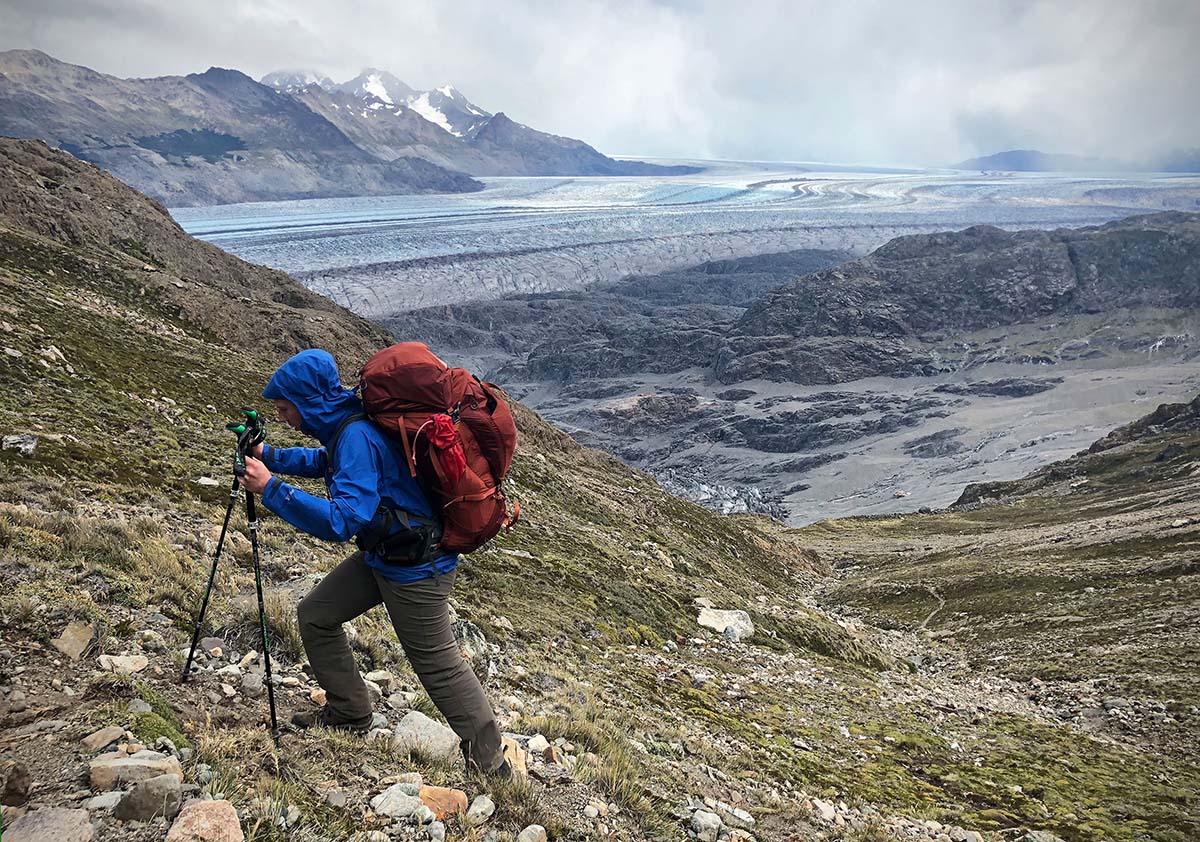
You’ll hear us refer to Gore-Tex Active a number of times in this review. This is the most breathable fabric in the Gore-Tex lineup, which is great for hiking and other aerobic activities where you’ll be working up some body heat. It isn’t, however, as tough as regular Gore-Tex and Gore-Tex Pro that are commonly found in burlier hardshells used for backcountry skiing, climbing, and mountaineering. And given that the Drypoint has a relatively thin 20-denier shell and lack of a helmet-compatible hood, the jacket is designed for hiking—and excels at that purpose—but isn’t as alpine-centric as some other models.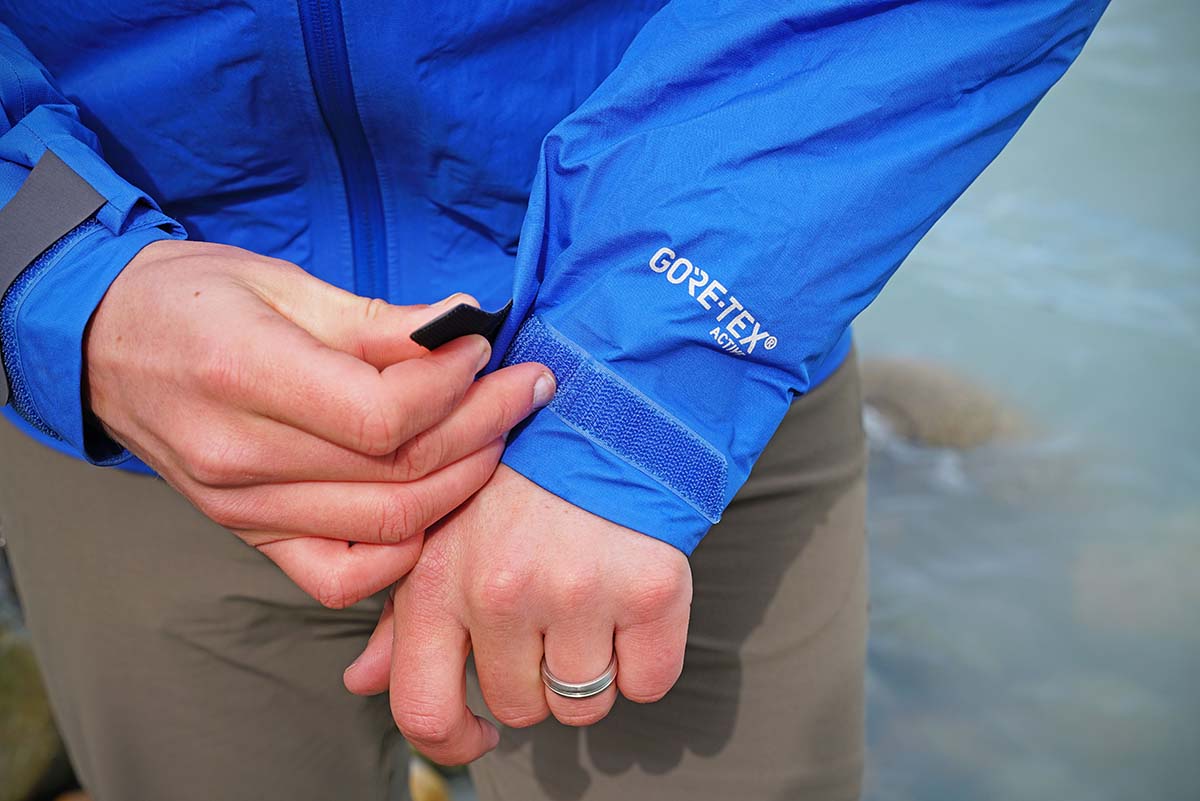
One of the big selling points of the REI Drypoint GTX is breathability. Gore-Tex Active is extremely impressive in this regard—it allowed us to hike with a fully loaded pack for extended periods with the jacket on while remaining totally comfortable. Those who have worn a cheap rain jacket and actually tried to hike in it know that clammy, plastic bag-like feeling, but the Drypoint felt soft and smooth against the skin and didn’t clam up.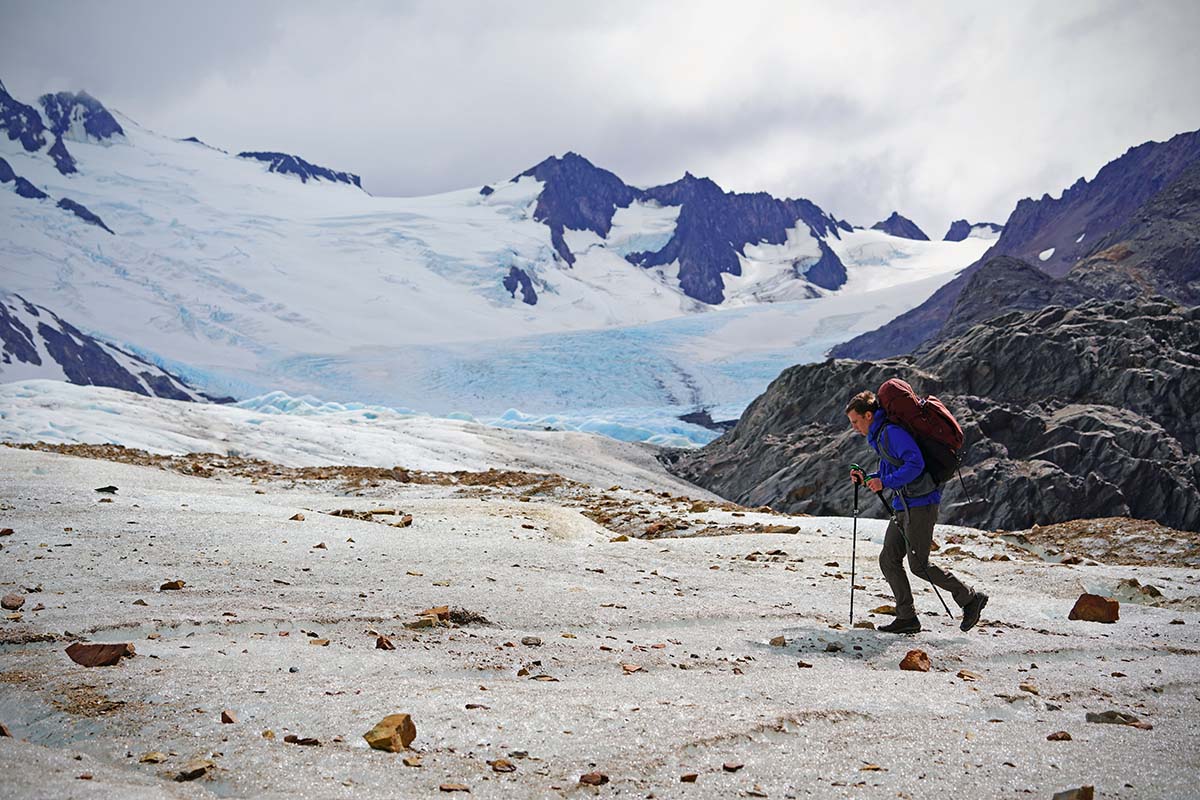
It’s worth noting that the REI Drypoint GTX lacks pit zips, which is a common way to dump heat quickly when you’re working up a sweat (often on jackets made with a less breathable type of Gore-Tex or another material). We do appreciate the mesh-lined hand pockets, which can be opened to release body heat, not to mention pit zips are a quick way to add weight. But the REI’s core vents are a little less versatile than standard pit zips because opening them in a downpour leaves you vulnerable to water seeping in. That said, in most instances, the Drypoint is a class leader in breathability.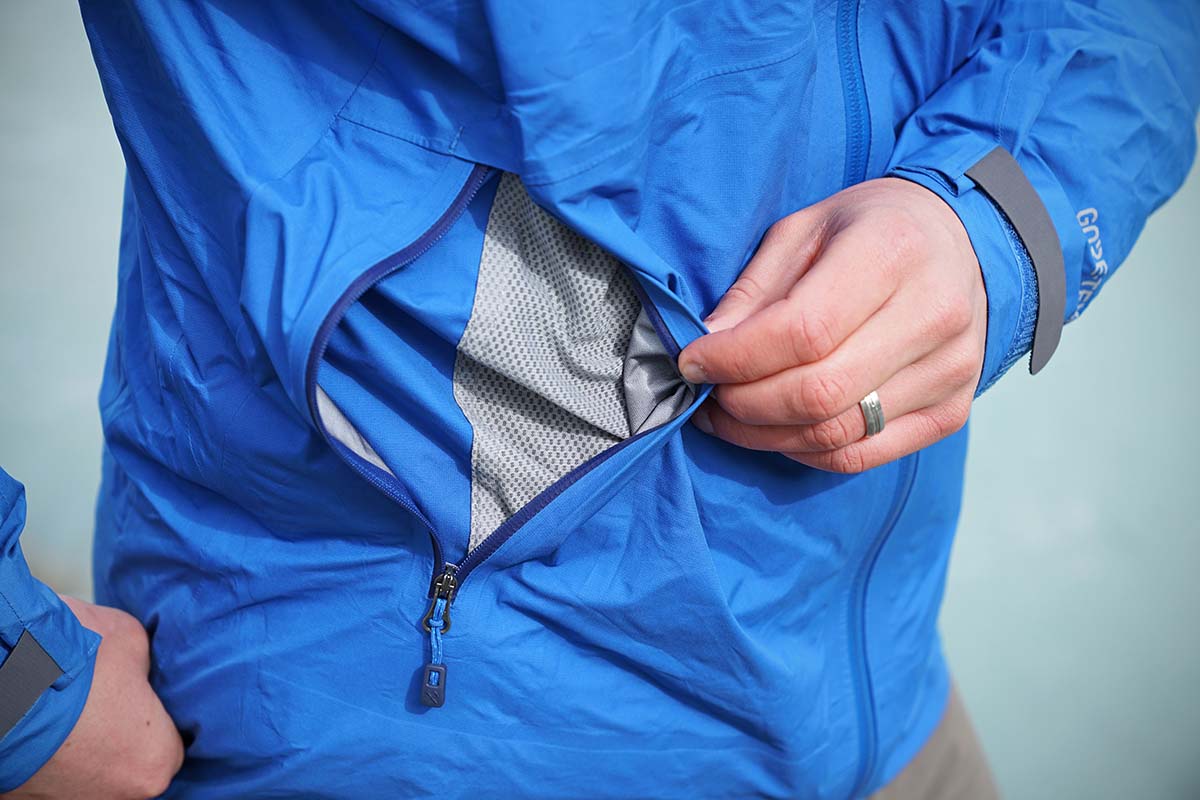
At 10.5 ounces, the REI Drypoint punches well above its weight. For reference, it’s the lightest model in our hardshell round-up and competitive in the rain jacket category. By comparison, Arc’teryx’s Zeta SL is a little heavier at 10.9 ounces, the Patagonia Rainshadow is 14 ounces, and REI’s own Westwinds tips the scales at 13 ounces. You can shave weight with a minimalist design like the Outdoor Research Helium at 6.3 ounces, but that jacket has far less breathability and fewer features—it’s much more of an emergency shell. For hikers and backpackers who want a high-quality and feature-rich jacket, the Drypoint is a terrific option.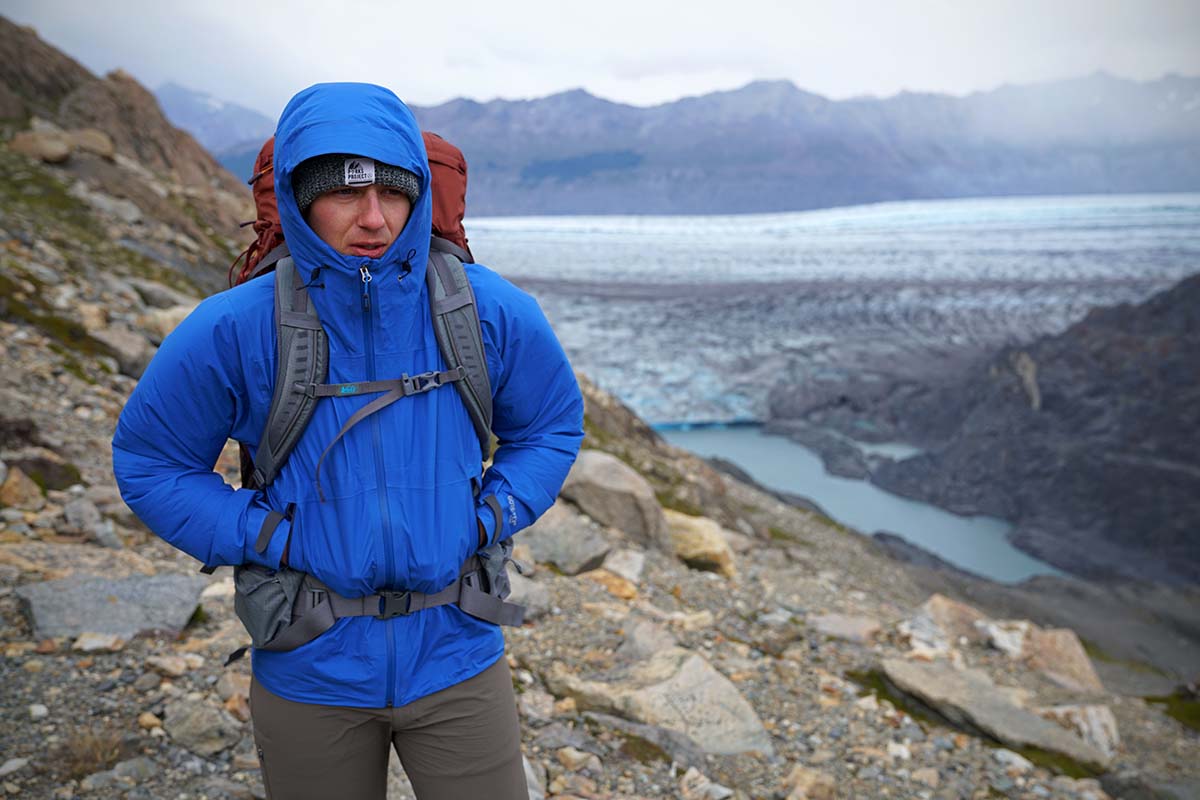
In terms of packability, we’ve had no issues compressing the Drypoint into its own hood. It doesn’t stuff into one of its own pockets, nor does it come with a stuff stack, but this is common in the hardshell jacket world. When folded into its hood, the jacket is relatively compact, easy to grip with one hand, and doesn’t take up much space in your pack. The flexible Gore-Tex Active membrane and thin 20-denier fabric actually help out here as they’re less burly and more stuffable than a thicker jacket. Remember to keep the Drypoint away from sharp objects in your pack as that would be an easy way to get a tear.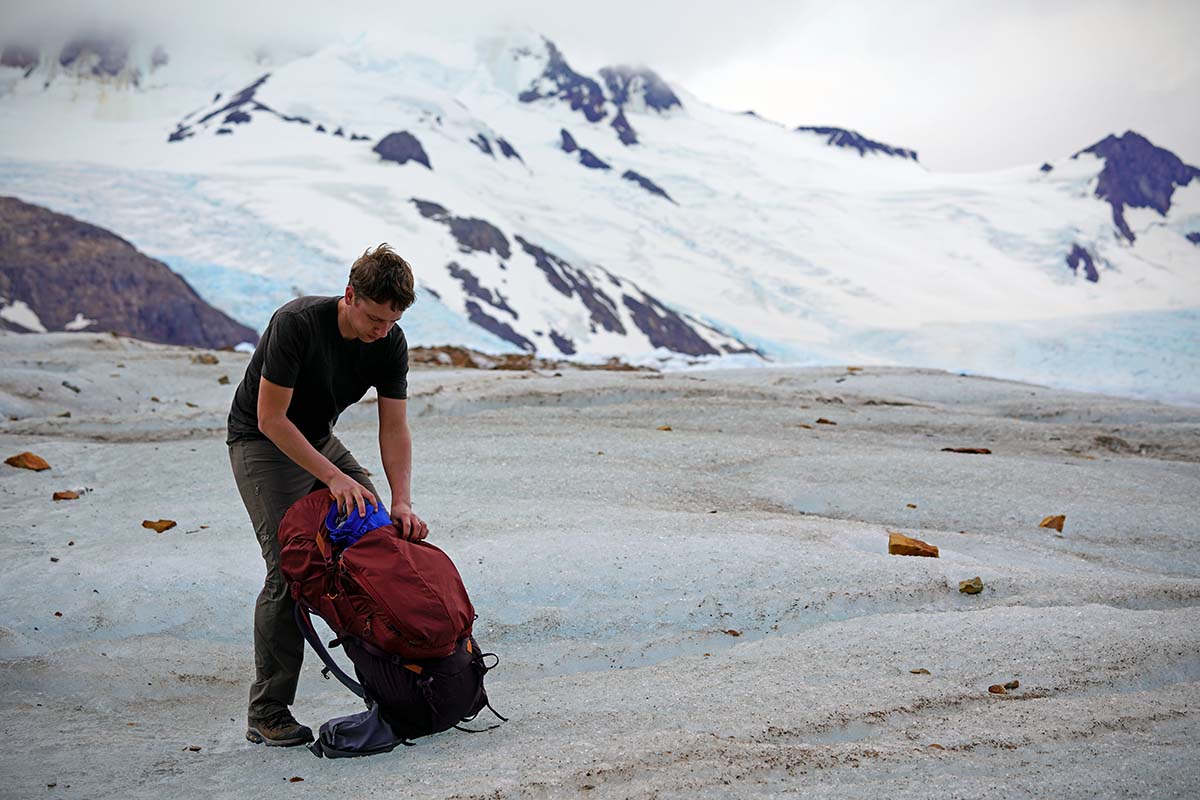
Durability is one area where the REI Drypoint falls short of more alpine-focused hardshells. Gore-Tex Active prioritizes breathability over durability, plus the Drypoint has a relatively thin 20-denier shell. For comparison, our top rated all-around hardshell is the Arc’teryx Beta AR, which uses Gore-Tex Pro and a mix of 40- and 80-denier panels. If you’re consistently crashing though branches when backcountry skiing, brushing against sharp granite when climbing, or stuffing your jacket into a pack full of sharp objects like crampons, a higher-denier fabric will help prevent tears. But for hiking and backpacking—precisely what the Drypoint is designed for—20 denier should get the job done while keeping weight down.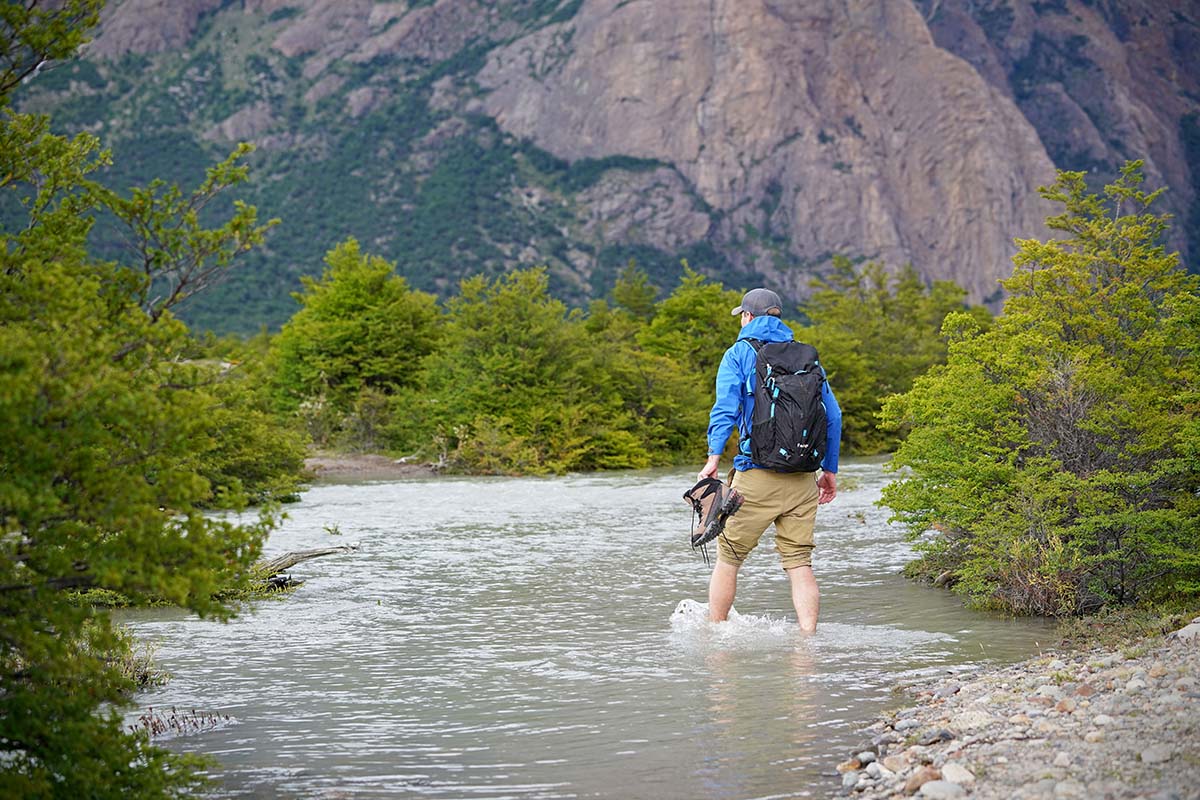
We’ve worn the Drypoint for a few months including multiple long days during our Patagonia trip, and it has held up exceptionally well. We have no scuffs or scratches on the shell and it pretty much looks like new. We can attest to the build quality, which truly hits a premium tier that has eluded REI in years past (we had thoughts of Arc’teryx when first putting it on, which is a huge compliment given that they are the industry leader in shells). 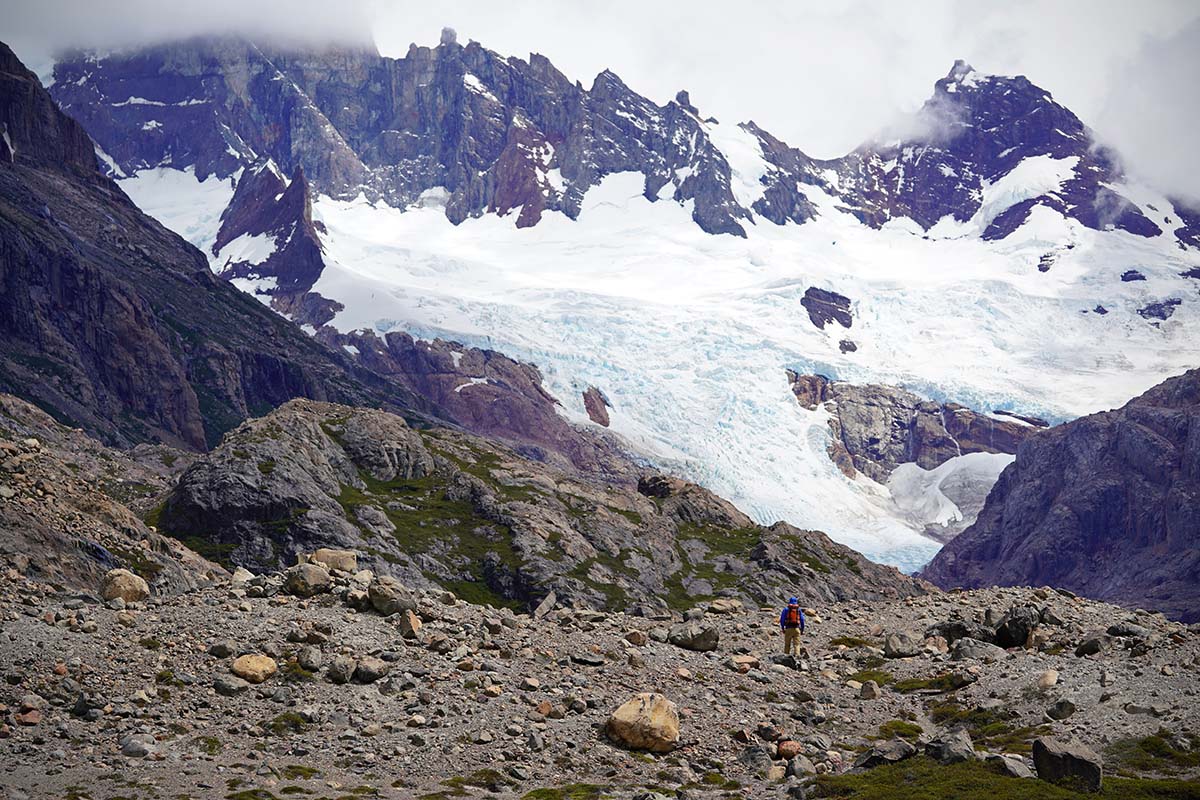
The hood matters a lot in choosing a shell—it dictates the type of activities for which it can be used. We’ll start by saying that we like the hood on the REI Drypoint GTX: it’s comfortable and has multiple adjustment points to batten down the hatches including at the back of the head and by the collar. In addition, the built-in visor is a nice feature for periods of extended hiking in the rain. However, the hood is not helmet-compatible, which all but eliminates activities like climbing and skiing. For hiking, we appreciate the lack of helmet compatibility as it means a snug fit around the face and less material and bulk. But alpine uses that require a helmet are pretty much ruled out (you can wear the hood under the helmet, but we’ve never been fans of that approach).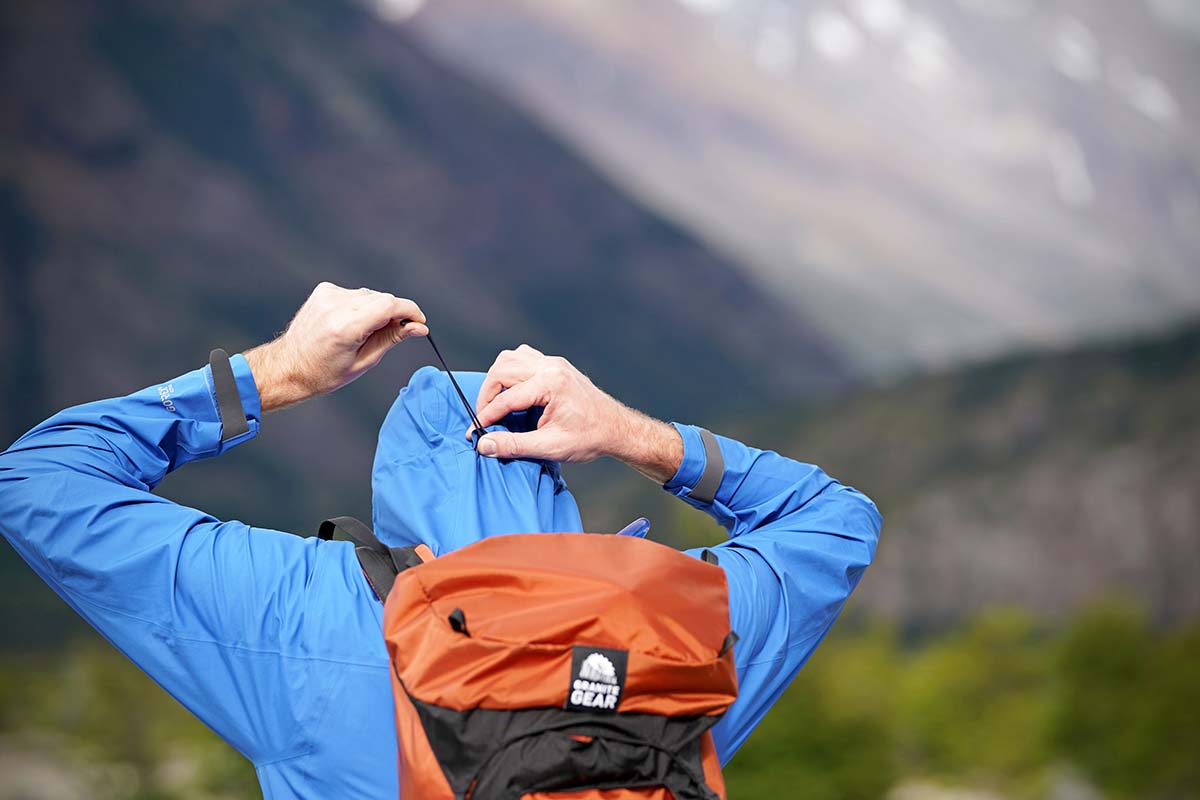
The Drypoint has two large hand pockets and no chest pockets. For hiking, this is everything we need and nothing we don’t. The pockets are high enough that they are easy to access when wearing a pack, and we don’t need the same volume of storage as we do with a shell for resort or backcountry skiing (when skiing we carry things like liner gloves, snow goggles, skins, and a two-way radio, and that’s where chest pockets or interior drop-in pockets can be helpful). As mentioned above, the hand pockets are mesh on the inside, which provide a nice way to dump heat and somewhat compensate for the lack of pit zips. In terms of toughness, we did notice one tiny snag on the outside of the mesh that occurred at some point during our backpacking trip, but the mesh seems high-quality and we don’t expect further issues here.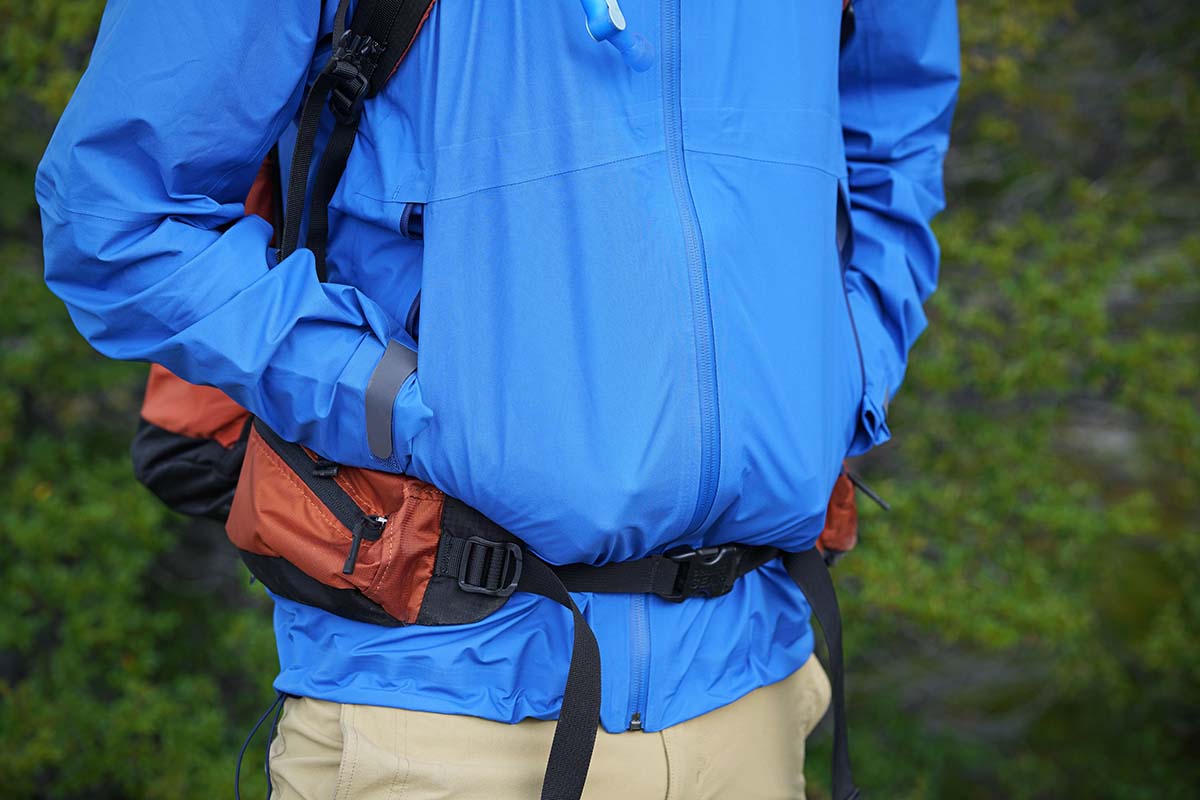
We love the fit of most of REI’s latest in-house gear. For the Drypoint GTX, we got our typical men’s medium and it fits extremely well. Our primary tester is just over 6 feet tall and 170 pounds, and some jackets fit him well in the torso but are too short in the hem or sleeves. This is not the case with the Drypoint—REI managed to nail the length and create a nice, athletic cut that isn’t overly baggy. The Drypoint is slightly less trim in design than a comparable Arc’teryx shell, but that’s probably a good thing for backpacking and uses like travel where you may might want to layer underneath. Unlike a number of baggier jackets we’ve worn recently from brands like Patagonia, Marmot, and The North Face, the Drypoint hits that just-right fit that is performance-oriented without being too trim.
As we touched on above, REI chose a 20-denier ripstop nylon for the Drypoint GTX, which is bluesign-approved. This means that the brand took extra measures during production to minimize potential negative impacts on workers, the environment, and consumers. Additionally, the jacket is Fair Trade Certified, which indicates that factory workers have safe working conditions and access to community programs like education and healthcare initiatives. Importantly, some companies have started incorporating recycled fabrics and PFC-free DWR coatings into their rain jackets and hardshells, and we hope to see REI follow suit in a future update to the Drypoint.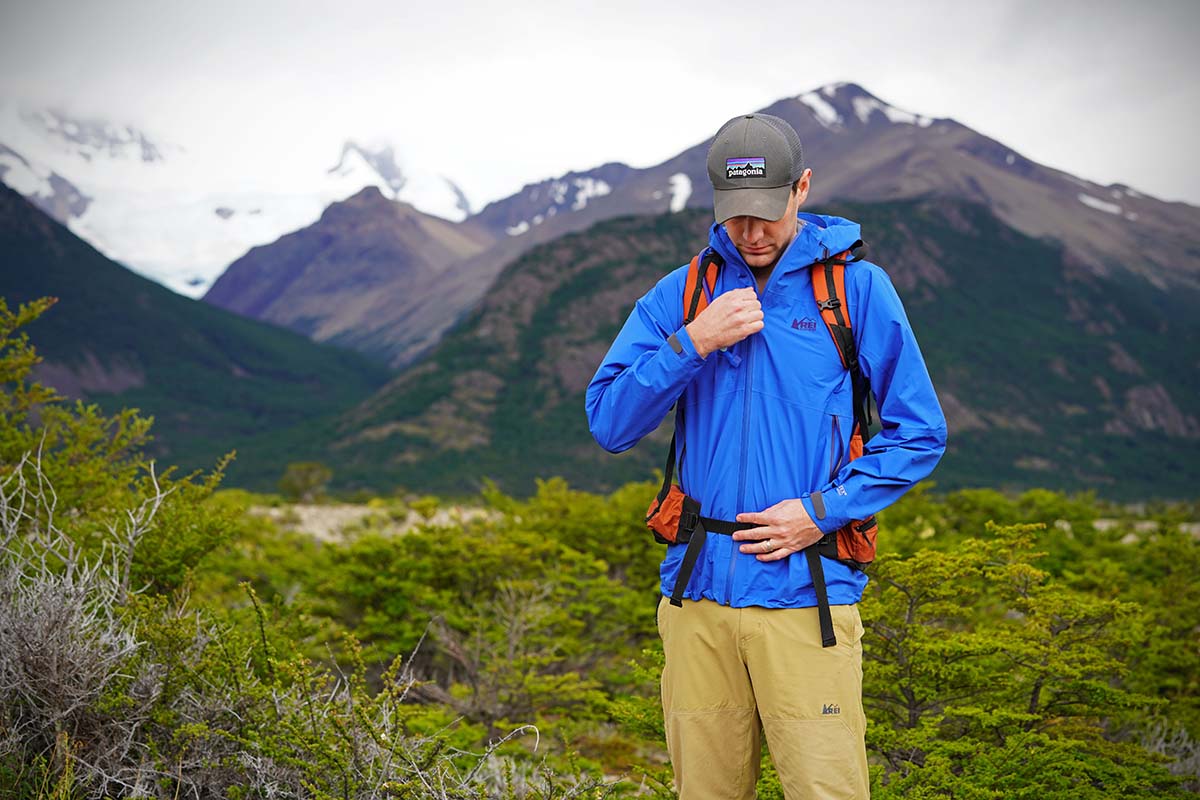
.jpg)
| Jacket | Price | Weight | Category | Waterproof | Pit Zips | Packable |
|---|---|---|---|---|---|---|
| REI Co-op Drypoint GTX | $249 | 10.5 oz. | Performance/daily use | 3L Gore-Tex | No (vents) | No |
| Patagonia Rainshadow | $199 | 14 oz. | Hiking/daily use | 3L H2No | Yes | Yes |
| Arc'teryx Zeta SL | $299 | 10.9 oz. | Hiking/daily use | 2L Gore-Tex | No | Yes |
| REI Co-op Stormbolt GTX | $279 | 14.6 oz. | Performance/hiking | 3L Gore-Tex | Yes | No |
| REI Co-op Westwinds GTX | $199 | 13 oz. | Performance/hiking | 2L Gore-Tex | Yes | No |
| BD HighLine Stretch | $299 | 12.7 oz. | Performance/hiking | 3L BD.dry | Yes | No |
The REI Co-op Drypoint GTX is a lightweight and well-appointed shell built for hiking and backpacking. Another capable option in this category is Patagonia’s Rainshadow, which was updated for 2020 with a 3-layer construction (the previous generation was a less protective 2.5L design). Rather than Gore-Tex, Patagonia uses their in-house H2No waterproofing, which does a good job at keeping the elements out but is a step down in performance (it’s doesn’t breathe as well and is crinklier). That said, the Rainshadow has pit zips and a more durable 30-denier shell, incorporates stretch into the build for greater mobility, and is reasonably priced at $199 ($50 less than the Drypoint). All in all, for casual use and light adventuring, the Patagonia is a nice option. But with a lower weight and improved breathability and weather protection, the REI is our preferred choice for serious hiking and backpacking.
Arc’teryx has done a nice job with their hiking-specific Zeta line, and the Zeta SL in particular is a formidable alternative to the Drypoint GTX. It weighs slightly more than the REI at 10.9 ounces, is more durable with a 40-denier shell, and has the fantastic fit and finish we’ve come to expect from Arc’teryx. Where the Drypoint has the advantage is breathability: the Zeta SL has a more basic 2-layer Gore-Tex Paclite Plus construction, plus it costs $50 more. Both are among our favorite jackets for hiking and the Arc’teryx gets the nod for daily use, but the Drypoint’s slight performance advantage and cheaper price give it the edge in our book.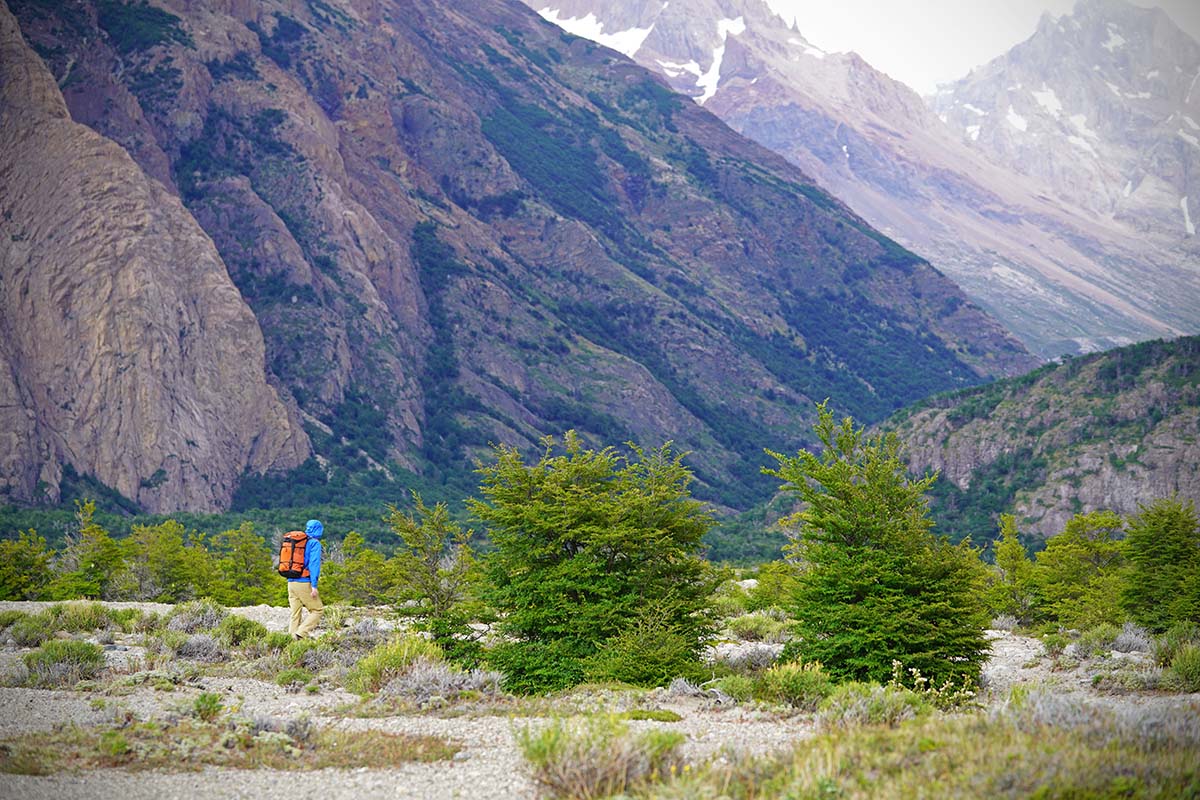
Within REI’s in-house line, their Stormbolt GTX and Westwinds GTX shells are worth considering. Starting with the Stormbolt, you get regular, 3-layer Gore-Tex and a thicker shell that is 30 denier in the body and 40 denier in the shoulders and waist. However, the Stormbolt feels much more like a crossover hiking/skiing piece—it’s less breathable than the Drypoint and has a helmet-compatible hood, baggier fit, and costs $30 more. If you want a high-value backcountry ski jacket, the Stormbolt can certainly fit the bill. But we prefer the Drypoint for hiking and everyday wear.
Stepping down in price, REI Co-op's Westwinds GTX costs $50 less than the Drypoint but uses entry-level, 2-layer Gore-Tex Paclite. This translates to less protection in heavy, sustained moisture (which we experienced in REI’s similarly constructed XeroDry GTX). However, the Westwinds is a little more performance-oriented than the Drypoint with a helmet-compatible hood, pit zips, and a more durable 40-denier face fabric. Overall, for shrugging off light rain or throwing in a pack when serious downpours aren’t in the forecast, the Westwinds certainly can do the trick. That said, we think the Drypoint is worth the extra cost for most people and REI’s best all-around offering for hiking, travel, and daily wear. 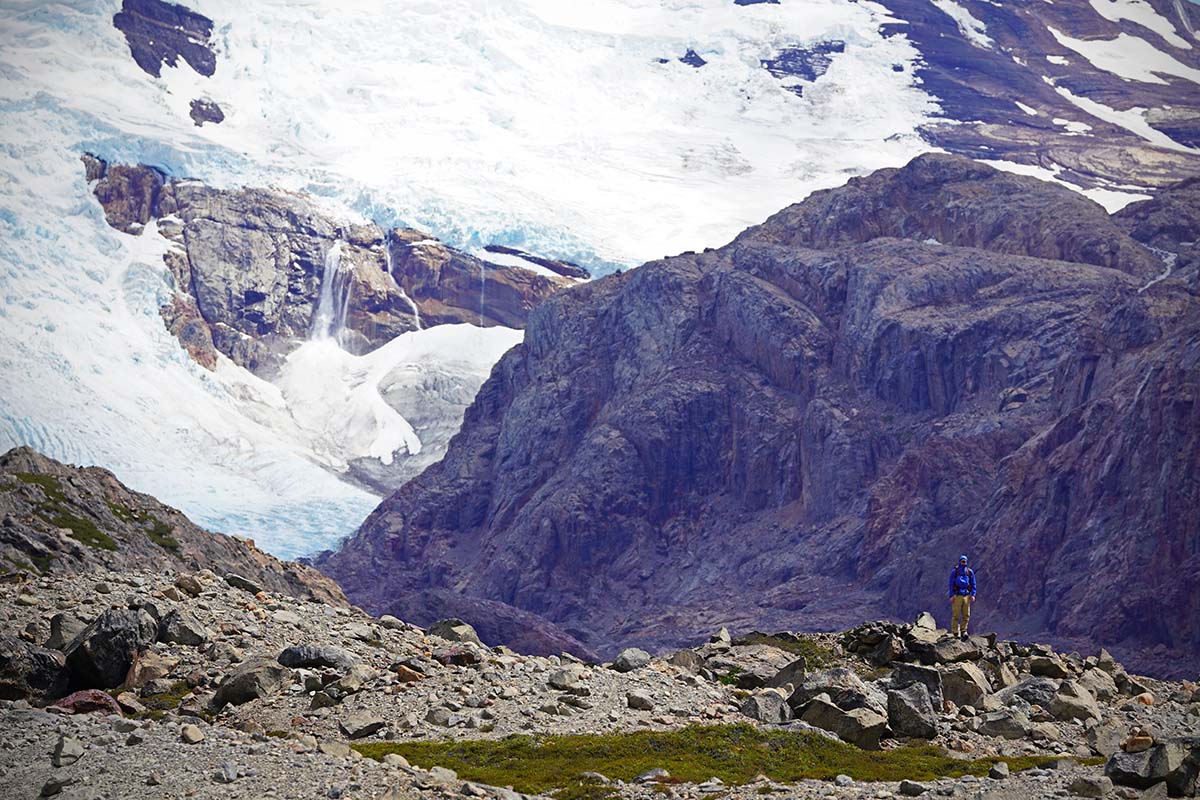
Last but not least, Black Diamond’s HighLine Stretch is a nice alternative for those who prioritize mobility and comfort over all-out protection. Like the Drypoint, the BD uses a 3-layer construction (in this case, Black Diamond’s in-house BD.dry) and is decently light at 12.7 ounces. You also get performance-ready features like a climbing helmet-compatible hood, pit zips, and a tall collar. And as its name suggests, the HighLine Stretch has a light amount of elastane in its construction for added range of movement. Added up, for fast-and-light alpine missions when heavy rain isn’t in the forecast, the BD is a solid all-around option. For truly wet and windy conditions, we prefer to the Gore-Tex-equipped Drypoint.
Editor’s note: We usually provide a live price comparison table below our outdoor gear reviews, but the Drypoint is sold exclusively by REI Co-op. You can see the Drypoint GTX page here and support us in the process. Thanks!